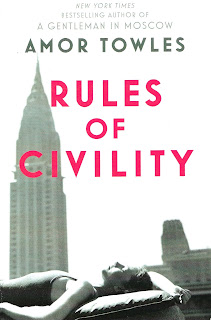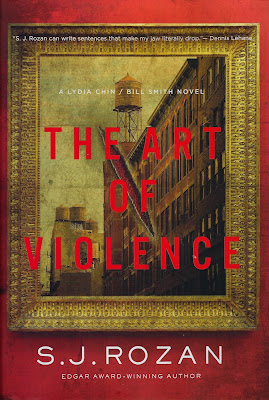I read six books in June, and all of them were from my 20 Books of Summer list. I liked all the books; four of them were upbeat and fun; two of them were more serious and somewhat depressing.
Fiction
Table for Two (2024) by Amor Towles
This is a short story collection. There are six stories plus one 220 page novella. The short stories are all set in New York City. See my post on some of the short stories here.
In the novella, "Eve in Hollywood," Towles returns to a character in his first novel, Rules of Civility. I did read that book, but I don't think you need to have read it to enjoy the story. "Eve in Hollywood" is set in the Golden Age of Hollywood, and it features Olivia de Havilland as a character. I enjoyed the novella very much.
The Burgess Boys (2013) by Elizabeth Strout
I have read four books by Elizabeth Strout, and I have rated all very highly, but they are always difficult reads, with hard to like characters and family difficulties. This one is my favorite so far. My review here.
Fantasy / Time Travel
Oona Out of Order (2020) by Margarita Montidore
I read this book because I like time travel books and this one was on a list of "time loop" novels (the film Groundhog Day is a good example of a time loop). In this book, Oona jumps from one year to another year in her life, randomly. I liked it. I have been thinking about it off and on since I read it. But it can be frustrating. My review here.
Crime Fiction
Death by Accident (1998) by Bill Crider
This book was my first read for 20 Books of Summer. The Sheriff Dan Rhodes series by Bill Crider is set in a small town in Blacklin County, a fictional county in Texas. It is a cozy series; Sheriff Rhodes solves crime mostly with his intuition and avoids computers where possible. Death by Accident is the 9th book in the series. See my review.
Everyone in My Family Has Killed Someone (2022) by Benjamin Stevenson
This story takes place at a remote ski resort in Australia, where Ern Cunningham's family is having a family reunion. They are coming together because Ern's brother is getting out of prison, after having killed a man. Family relationships are strained. Shortly after the majority of the family arrives, a man's frozen body is found near the resort, and the weather begins to get very bad, threatening to snow in all the guests.
This is a very unusual mystery. Ern Cunningham, who is narrating the story, writes books about how to write mysteries. The books starts with a list of classic rules for mysteries as published by Ronald Knox in 1929. So it is a traditional fair play mystery, but of course there is lots of misdirection in the clues, and for the most part the author kept me fooled for most of the book. I enjoyed the book, although I sometimes got frustrated with the repetition of the "rules." I liked it enough so that I will read the next one to see how it goes.
A Death in Summer (2011) by Benjamin Black
This is the fourth book in the Quirke series written by John Banville, under the name Benjamin Black. Quirke is a pathologist in Dublin, Ireland in the 1950s. He often is called in to examine dead bodies before they are moved, and to perform autopsies. Inspector Hackett will sometimes seek his advice on crimes, when he thinks the case is tricky. I like the slow pace of the writing and the emphasis on the characters as much or more than the crime investigation. I like the continuing characters. This one was about a sordid subject, and depressing. Yet I will persist and read more of them.
The photos at the top and bottom of this post are recent pictures of plants in our back yard patio area. The top photo is of a cuphea plant (on the left) and a blue sage plant that are hummingbird attractors. They have been doing a good job of attracting hummingbirds and bees.
The two photos below are closer shots of blue sage plants. We have two other pots of those plants in the back. I love the little buds on the blue sage. Click on the images for best viewing quality.




































